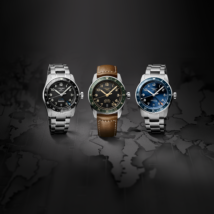Wagner workshops: your jewellery in the best hands
In Wagners goldsmith studios, masterful skill is applied to the perfect finish of every piece of jewelry.
At Wagner, we have more than 100 years of experience in traditional goldsmithing. This knowledge and the excellent practical craftsmanship of the goldsmiths allows perfect processing of the jewelry.
Incomparable gloss
Until a jewel shines in that incomparable brilliance, several essential work steps are indispensable. Only then does the final result unfold the desired effect. In order to achieve the highest possible surface quality for jewelry, platinum or gold is processed using appropriate process and machine technology, such as grinding with polishing granules. Grinding also serves as the basis for the subsequent polishing process. Polishing takes place in several steps until a shiny result is achieved. Various abrasives and materials are used. Due to its special properties, polishing platinum is a challenging task.
By polishing, scratches can be removed from stainless steel, gold and platinum watch cases or watch straps made of these materials in the ateliers. Jewelry made of gold or platinum also shines in new splendor after careful polishing. The friendly and professionally competent Wagner team knows how to provide reliable advice in such cases.
Means of design
As a means of design, individual sections of a piece of jewelry can also be matted. This creates an effective transition from shiny polished surfaces to matte sections. Precious metal is matted chemically by means of pickling or by hand with emery paper and pumice stone and mechanically with the aid of a sandblasting blower and special granules.
Jewelry can also be satin finished. In this process, lines are drawn crosswise by hand or by machine with a thread graver, creating a finely matted silk-like surface.
Filing is one of the basic techniques that a goldsmith routinely masters. Filing is used not only to clean up the jewelry during the manufacturing process but also to shape surfaces as needed and give them a special character. Sophisticated filing techniques allow each filing stroke to be precisely executed on a piece of jewelry. For filing, flat files, round files, triangular files, half-round files or even square files are used. When processing metal workpieces during jewelry manufacturing, bumps or burrs are usually left behind, which must be removed.
Another surface treatment technique is electroplating. In this process, for example, a piece of jewelry receives a metal coating through electrolysis. This process makes the surface more resistant and less sensitive to scratches.
Especially with white gold, the related process of rhodium plating creates a uniformly beautiful color of this precious metal.

